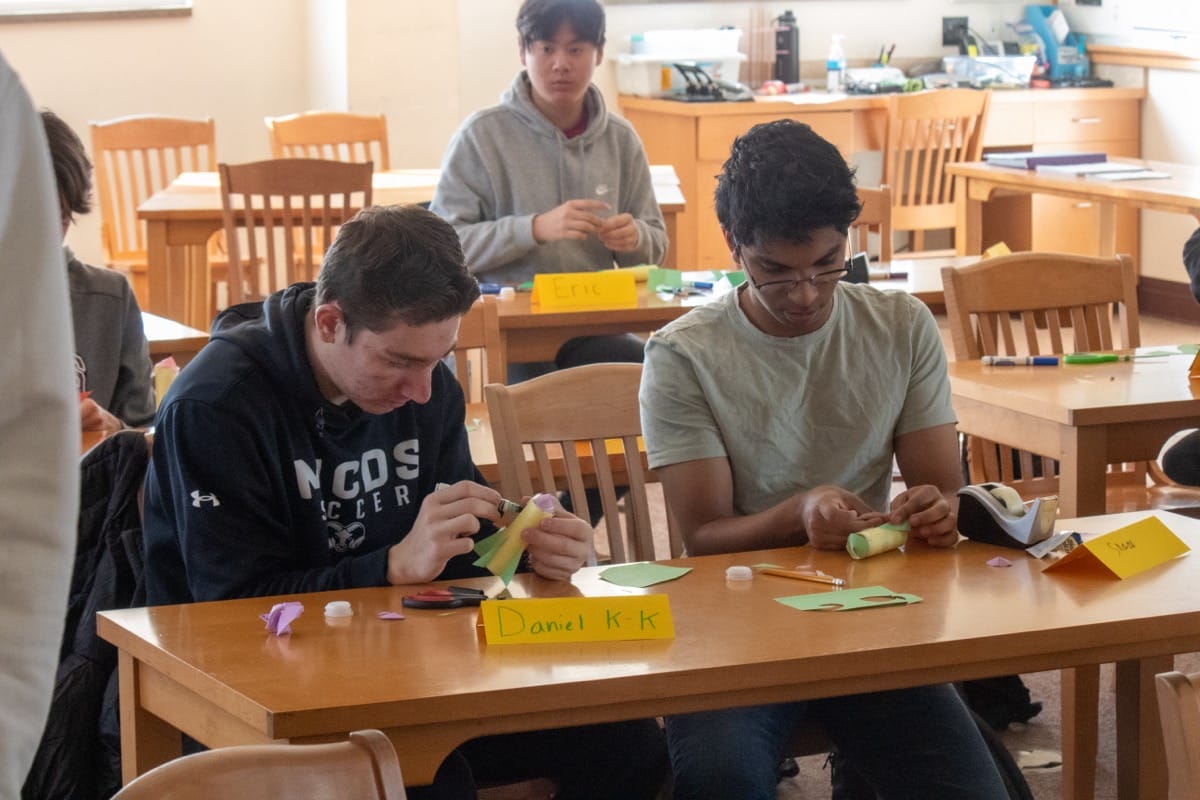Story and photos by Hale Foster ’25
On July 24, 1969, humanity finally achieved a long-awaited goal. Generations of people have looked to the stars for guidance, but in the 1960s, the human race successfully landed on the moon for the first time in history. The success of the Apollo 11 mission was due to the work of countless scientists, researchers, mathematicians, and engineers, but the triumph of the endeavor was enjoyed by observers across the globe. Now, over 60 years later, students continue to find inspiration in humanity’s first successful venture to the moon, a fact that is evident in the flight-themed Winter Term course directed by Diane Broberg, Upper School Mathematics Teacher and Melanie Moody, Upper School Mathematics Teacher. In “3-2-1 Blastoff,” MICDS students follow in the footsteps of those brave researchers in the study of flight—from planes to helicopters to rockets.
As part of their research into the dynamics of flight, students built stomp rockets and their associated air-powered launchers with materials like paper, PVC pipes, and repurposed soda bottles. However, these rockets were not the only construction project that students tackled during the course. They also built airplanes using paper and construction kits after a lesson on the physics of aircraft. Woven throughout every design project are lessons in math and physics. For example, during the stomp rocket test, students measured the launch angle to calculate the most optimal inclination to achieve the greatest distance. Students put their trigonometry skills to the test, and the results were awe-inspiring—some students managed to launch their rocket across the entire Upper School Gymnasium!
“We hope students do a little problem-solving, learn some physics and math of flight, and are exposed to a topic that they may have never thought about before. The goal is to pique interest or open a door for students,” Ms. Moody and Ms. Broberg share. Their unique approach to teaching helps to fuel students’ learning and participation—no pun intended. The class is designed for students regardless of their current level of math or science, inviting a large range of students to participate. “The class is really fun, it gives us a good chance to experiment with aviation topics. I’ve had a really good time so far,” shares Charlie Mills ’26. The class culminated in a test launch of solid-fuel hobby rockets, and for many, this event was the highlight of their week. Winter Term may have started later than expected this year, but Ms. Broberg and Ms. Moody ensured that their students could still blast off into learning.












